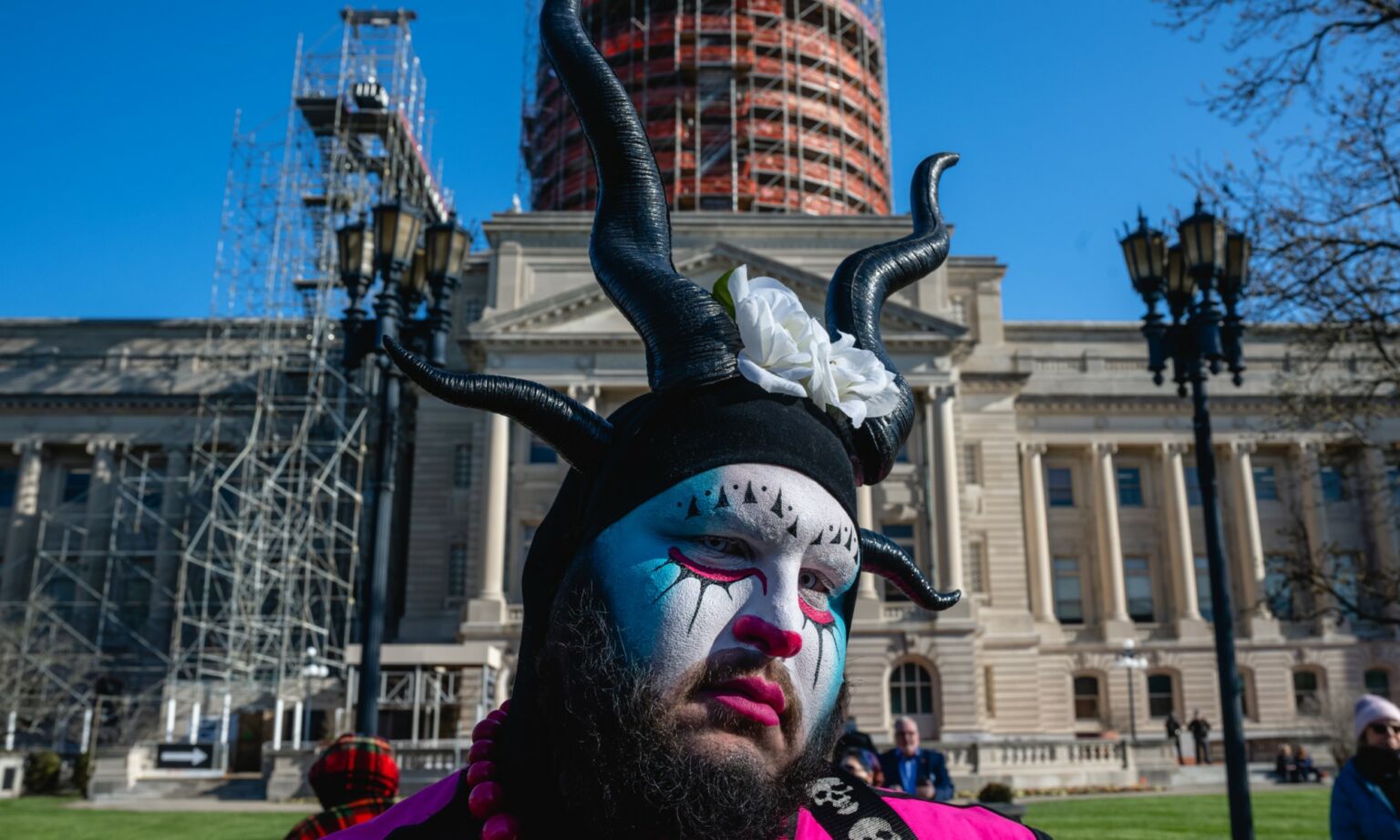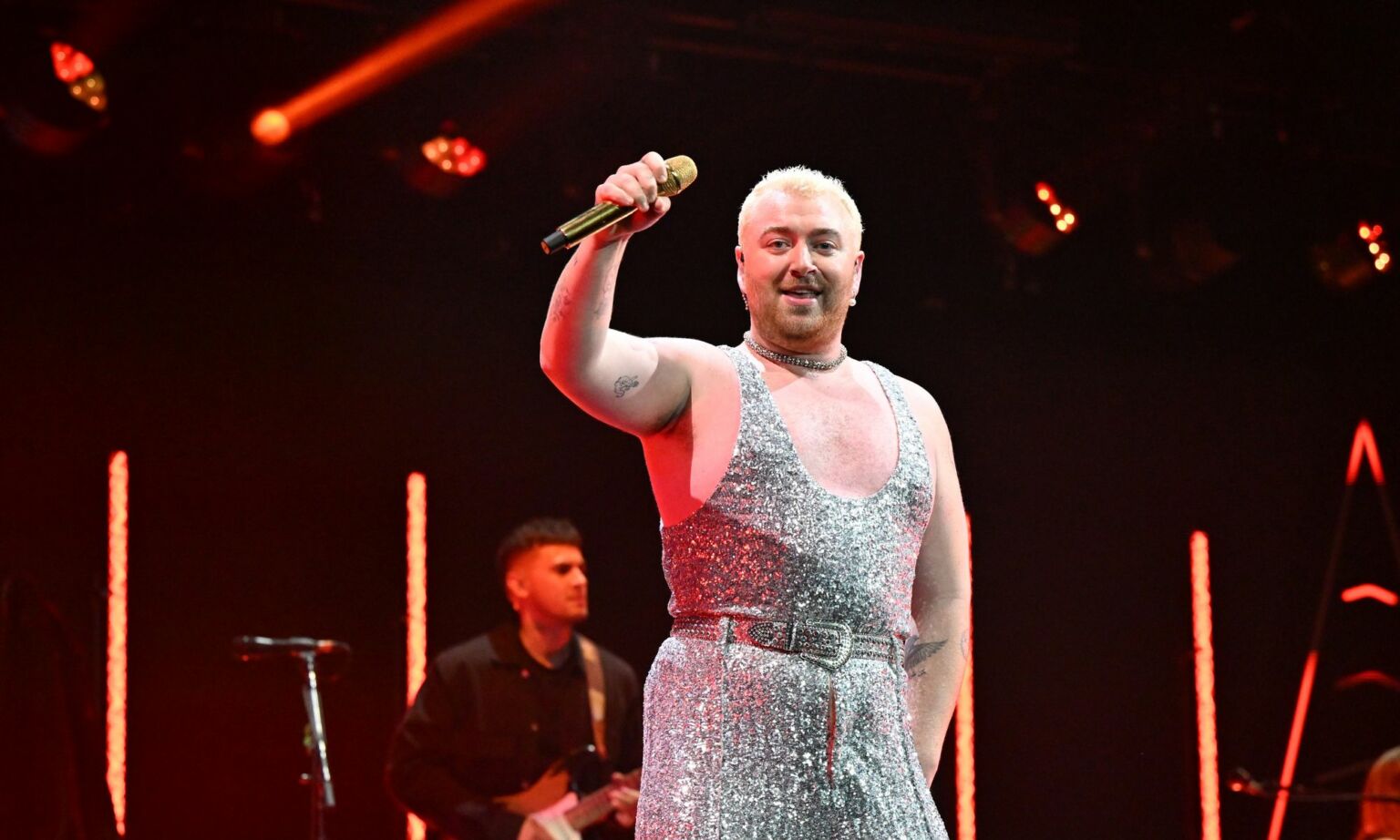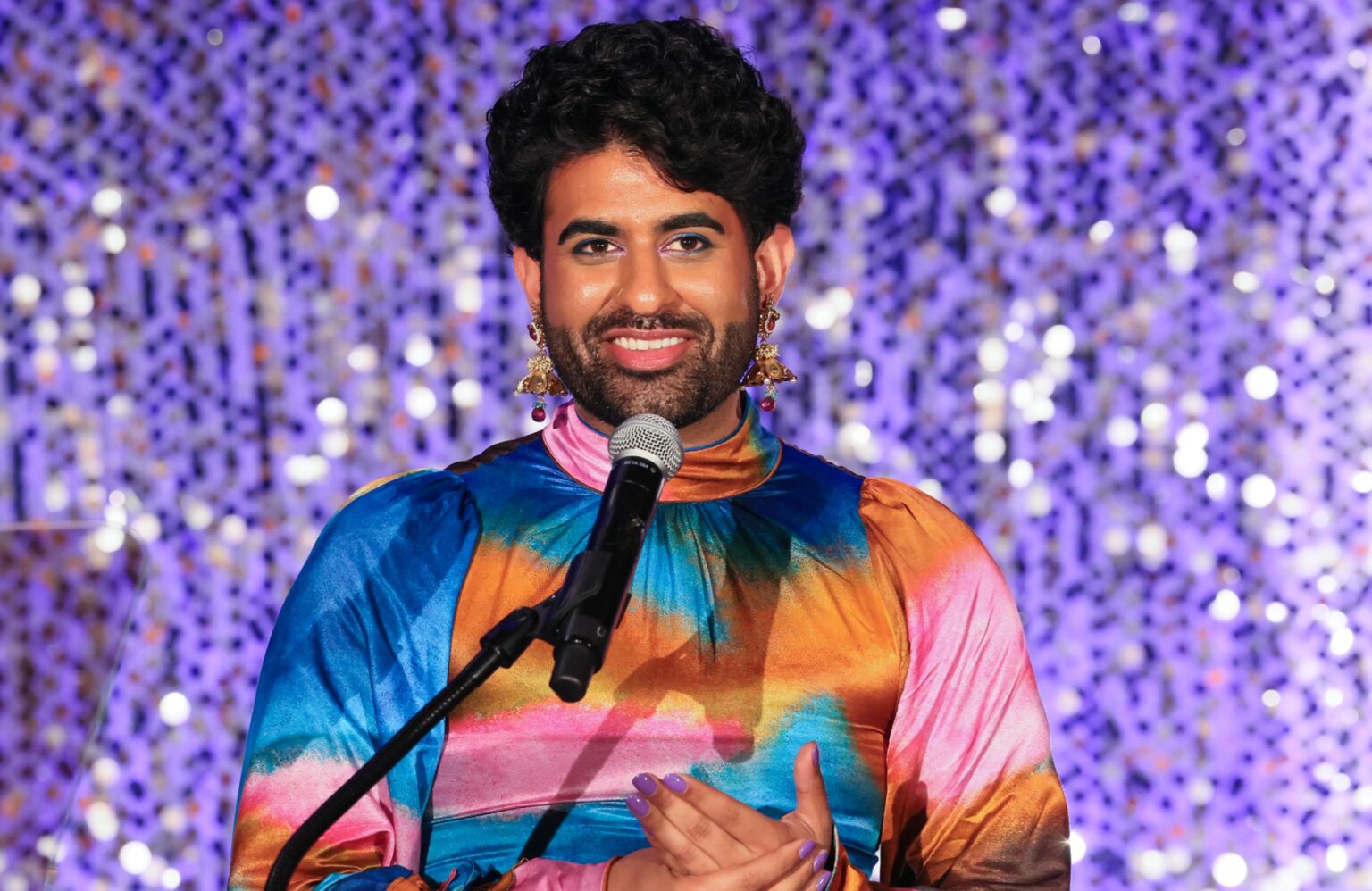
Long-read
The nihilism of nonbinary
There is nothing liberating or progressive about erasing every trace of one’s sex.
Want to read spiked ad-free? Become a spiked supporter.
Some things make less sense the more you study them: the SNP’s finances, Joe Biden’s sentences… and being nonbinary.
Nonbinary is an umbrella term used to describe those people who believe they are outside the gender binary. They believe that they are neither male nor female.
When you ask nonbinaries what they mean by this, the response usually boils down to men saying they feel kinda feminine sometimes, and women saying they kinda don’t. It’s not exactly The Communist Manifesto. When you point out that some men and women have felt this way since time immemorial, without feeling the need to turn it into a political cause, nonbinary males become aggressive and nonbinary females become sulky. All of which suggests that this nonbinary LARP may require some more thought.
If, like me, you prefer to identify as non-lunatic, you might be tempted to dismiss the nonbinary phenomenon as a passing fad, like the Tamagotchi ‘egg’ toys popular among children a couple of decades ago. But there’s a difference between the idea of nonbinary and fads like Tamagotchis, especially among the young. Schools banned Tamagotchis in the 1990s because they were a distraction. This time, our public institutions, from multinational corporations to medical bodies, are actively promoting the idea that you can be neither male nor female.
Advocates themselves seem unclear as to what ‘nonbinary’ means. Some seem unsure where to draw the line between being nonbinary and being trans. The huge American LGBTQ+ charity, the Trevor Project, insists that ‘It’s important to note that not all nonbinary folks identify as trans’. But the UK’s LGBT Foundation argues that nonbinary fits under the so-called trans umbrella. This isn’t much help, however, since the trans umbrella has by now grown so huge it could be used to protect the polar ice caps.
Throughout much of the 20th century, the prefix ‘trans’ tended to be used in relation to transvestites or transsexuals. It implied a transition from one gender or sex to the other. But this started to change in the 1990s. Disappointed by the physical results of transitioning – think big-jawed, deep-voiced ‘transwomen’ and miniature, small-boned ‘transmen’ – the trans lobby started to look for a new vocabulary that might capture what it is to be neither male nor female.
Activist Riki Wilchins played a key role in the development of nonbinary. He originally came to prominence in 1991, when he co-founded Camp Trans, an annual protest against the exclusion of transwomen from the women-only Michigan Womyn’s Music Festival. In the mid-1990s, he sowed the seeds for the idea of being nonbinary by coining a new term to describe himself – namely, ‘genderqueer’.
It was a fortuitous moment for Wilchins. From the late 1990s onwards, with queer theory flourishing in universities in the UK and the US, a slew of new identities and neologisms were being turned out, from agender and bigender to demigender and genderfluid. Nonbinary started to be used by activists and academics to encompass these new identities in the 2000s. Indeed, in 2002, Wilchins co-authored the tellingly titled Genderqueer: Voices From Beyond the Sexual Binary.
It wasn’t really until the latter half of the 2010s that nonbinary moved from the spheres of academia and activism and into mainstream culture – largely because an army of idiot celebrities embraced it.
Singer Sam Smith was one such bandwagon-jumper. In 2019, he declared himself to be ‘nonbinary’ and embraced ‘they / them’ pronouns. Smith was once an attractive young gay man. In his new nonbinary guise, he has come to resemble someone forced to twerk in fishnets as a prank.

Smith was followed by Ellen Page, who announced on 1 December 2020 that she now identifies as ‘transgender and nonbinary’. She was henceforth to be known as Elliot Page, and would use ‘he’ and ‘they’ pronouns. Her new pronouns didn’t put a smile on her face though. He / they has looked more miserable with every interview he / they has done.
There was also actress Sara Ramirez. In 2021, she was held up by HBO as a bold new spokesthem for the nonbinary cause when she was cast in the Sex and the City spin-off, And Just Like That. Sadly, in her role as Che Diaz, she had all the comic timing of a metronome as she tub-thumped lines from the nonbinary gospel. In a trailer put out by HBO, she pompously critiques the fun gay characters and themes of old-style Sex and the City with the sternness of a hatchet-faced Maoist, claiming that the new show is ‘making space for a more expansive definition of queerness’. Audiences loathed her, however, and she has since been dropped.
To the broader public, celebrities claiming to be ‘nonbinary’ and pluralising their pronouns has looked absurd. Nowhere more so than in a 2022 Time magazine interview with ‘genderqueer’ author Maia Kobabe, in which she insisted on the pronouns ‘eir’ and ‘ey’. ‘Time spoke to… Maia Kobabe about eir work… and what ey make of the current cultural moment’, the magazine declared. To which the only sensible response is… ey?
The vague, indefinable, neither-nor quality of ‘nonbinary’ certainly appeals to the narcissists among us. It offers even more opportunity for forensic self-obsession than the old trans identity does. And that’s saying something.
No one sums up this narcissism better than Alok Vaid-Menon, perhaps the most prominent nonbinary campaigner around today. He first gained a name for himself in the mid-2010s for performing execrable ‘poetry’ while dressed in garish women’s clothes that showed off a body hairy enough to put Burt Reynolds to shame.
In 2019, Vaid-Menon broke into the nonbinary big time when a lecture he gave went viral. In it, he denounced the fashion world for daring to make clothes targeted at men and women. He claimed that nonbinary people were so subversive they had been deliberately excluded from fashion. ‘My beauty is so tremendous it has to be edited out of magazines’, he declared. That’s a claim begging to be turned into a Specsavers ad.
Once upon a time it was permissible to laugh at a hairy bloke squeezed into a cocktail dress who takes himself much too seriously. But not today. Vaid-Menon’s pronouncements are treated with the kind of reverence once accorded to religious leaders. Last year, he was appointed as the first ever LGBTQ+ scholar in residence at the University of Pennsylvania.
Vaid-Menon’s rise appears to be based on little more than overweening self-confidence and an ability to espouse the banalities of the trans lobby. ‘There are as many ways to be as there are beings’, he once said, seemingly mistaking genders for personalities.
Vaid-Menon’s pseudo-profundities certainly appeal to empty-headed celebrities who struggle to distinguish between a sacred text and a riddle in a Christmas cracker. Take filmstar Jamie Lee Curtis who ‘interviewed’ Vaid-Menon at the Upfront Summit in 2023. She even gave him an opportunity to air his own spectacular delusion. ‘People often ask me why I continue to… live as incandescently as I do’, he claimed. Not outside your own head they don’t.
Vaid-Menon is not just given to boasting and uttering trans pieties. In 2021, an old social-media post of his resurfaced in which he also weighed into the debate about single-sex spaces. Instead of insisting that trans-identified males pose no risk to women and girls, as most trans activists do, he took a more original approach. He claimed that young girls aren’t as innocent as we think. ‘We have to challenge the idea that there is a perfect victim’, he said. ‘I believe in the radical notion that little girls, like the rest of us, are complicated people… Little girls are also queer, trans, kinky, deviant.’ He added that ‘no one is a perfect flower that can be corrupted’. This is sinister stuff.
Vaid-Menon is clearly not bothered by any flak he receives for his dubious views. He is nothing if not weapons-grade arrogant. This comes across in his lectures and writings, where he constantly downplays the significance of the terms ‘man’ and ‘woman’, despite these categories having been at the centre of all human cultures for millenia. He claims to be willing to recognise man and woman as valid genders, but dismisses the existence of a ‘gender binary’. ‘I hold space for men and women but not gender binarism’, he states.
Is it any wonder someone who has such contempt for the deeply held convictions of the overwhelming majority of people would also believe he has the right to dismiss concerns about child safeguarding? It’s hard not to suspect Vaid-Menon’s questionable outlook is shared by much of the trans and nonbinary lobby.

Appalling as views like Vaid-Menon’s are, they are not the only dangerous ones driving the non-binary bandwagon. In 2011, the website, genderqueer.me started to become the go-to site for young people who considered themselves nonbinary. It helped that it was set up by Micah Rajunov, a young woman with piercing blue eyes and a huge smile. It features heart-warming photographs of her wife and badly behaved dog, with its missing teeth and, of course, stories of her realisation that she was neither male nor female.
Rajunov’s influence didn’t stop at Genderqueer.me. In 2019, she co-edited Nonbinary: Memoirs of Gender and Identity, a book that sold like hotcakes among the troubled youth of America. And yet for all her winsome smiles and self-deprecating humour, Rajunov’s influence is every bit as malign as Vaid-Menon’s.
In August 2020, she gave an extended interview to Google Talks, in which she relayed her journey to nonbinary authenticity. In a moment that’s all the more extraordinary for the casual way she lets it slip, Rajunov explains that she was initially unsure of her identity and so hung out at some trans conferences. It was there she heard that you no longer had to try to be the opposite gender to qualify as trans. Instead, you could be neither man nor woman. ‘I didn’t know what that meant really’, she admits, before adding the punchline: ‘But I knew that I wanted to have surgery, top surgery. I always say I transitioned backwards because I started with surgery and then I did everything else.’
In other words, Rajunov had little interest in attempting to look like another type of body. She wasn’t interested in transitioning to another sex or mimicking a male. Rajunov just wanted to remove her breasts.
This exposes a sad, largely unacknowledged truth about the nonbinary movement. It is driven in large part by a desire to mutilate one’s body for its own sake. It is an act primarily of negation, of nihilism. Nonbinaries want to erase the physical signs of their sex.
This has largely been concealed by trans activists over the past decade. They have won social, political and medical acceptance for their cause by promoting the idea that trans people have a burning, often desperate, need to try to make their bodies fit their inner gender identity – that is, the image of the opposite sex they have in their minds.
Since the public are familiar with the two sexes, it was once possible to persuade people that someone might be born in the body of the ‘wrong’ sex. People could accept the cod-explanation that the wiring in the brain or hormones in the womb had got mixed up. And so, even if reluctantly, many of us were initially willing to accept that the condition might not be entirely delusional.
What the public did not know, and the trans lobby was not keen to reveal, was that for an increasing number of ‘trans’ people, and above all their nonbinary successors, the most powerful motivation for ‘transitioning’ has never really been the desire to mimic the opposite sex. Rather it is driven by something far more self-destructive – to mutilate or erase the physical signs of their bodies’ sex.
It’s obvious why trans activists have long played down this aspect of their cause. The negative force of transgenderism, writ large in the very idea of nonbinary, of being neither / nor, would strike most people as pathological. They might start to see it for what it is – a psychological disorder.
Some nonbinaries have given the game away however. About 10 years ago, those who did acknowledge this desire to mutilate their sexed bodies explicitly embraced the idea of being nullo or neutrois – indeed, Rajunov’s own twitter handle is @neutrois.
When Cosmopolitan magazine explored the phenomenon of neutrois in 2021, it described Rajunov as one of its leading lights, and gave links to sites set up by Rajunov where readers could discover nuggets like this:
‘Neutrois people… seek surgery to lose the major physical signifiers that indicate gender to others (breasts, facial and body hair, crotch bulges, etc). The most extreme surgery is genital nullification (removal of all genitalia). Such people can be described as eunuchs.’
Neutrois nonbinaries often use the terms ‘null’ or ‘nullo’ interchangeably. An example of how overpowering this obsession can become was provided in January this year, when two men who ran a ‘nullo’ cult in Finsbury Park in London were given jail sentences. The trial revealed that the men involved had carried out and filmed procedures to remove one of their member’s penis and left leg, and another’s nipple.
Men who want to become neutrois tend to have their genitals removed, while most women tend to want to have their breasts removed – although there have been cases of others having their vaginas sewn up and their clitorises removed. Neutrois aspirants of both sexes often want to have their nipples removed, too, so powerful is their desire to smooth out and erase the existence of a sexed body.
The nonbinary cause is born of a psychological disturbance. It is no more deserving of public validation or affirmation than any other obsession with body-modification. Think of Denis Avner, who spent years having his body operated on in order to look more like a cat. He committed suicide in 2012, which rather suggests he might have been better seeking help of a psychiatric rather than surgical kind.
Of course, no medical organisation would argue that Avner’s pathological obsession with becoming a cat was valid. Sadly the same cannot be said for this pathological obsession with erasing the gender binary. In 2023, the world’s leading trans healthcare organisation, WPATH, added nullo, neutrois and ‘eunuch’ to its ever-expanding list of gender identities. In doing so, it was merely formalising a view widely held across the nonbinary ‘community’. In the US, some surgeons now actively promote the fact that they offer a ‘nullo’ service.
The trans lobby is already responsible for exacerbating the mental-health problems of troubled teenagers, feeding them the myth they might be born in the wrong body. But the nonbinary phase of transgenderism is perhaps even more dangerous. It is potentially normalising and affirming adolescents’ discomfort with and sometimes loathing for their changing bodies. And it is promising the darkest of solutions: the surgical erasure of all signs of either maleness or femaleness.
We need to resist the trans and nonbinary agenda. We need to challenge its claims to be liberating and progressive, and expose its creepy, nihilistic roots. To allow or encourage the modification and mutilation of young bodies is not a win for social justice or equality. It is accommodating pathological behaviour.
Nonbinary advocates may claim that negating the binary through the erasure of one’s own bodily sex is ‘freedom’. But it’s not. It is even more of a trap than the gender stereotypes from which so many confused young people think they want to escape.
Malcolm Clark is a TV producer. Visit his substack, The Secret Gender Files, here.
Pictures by: Getty.
To enquire about republishing spiked’s content, a right to reply or to request a correction, please contact the managing editor, Viv Regan.







Comments
Want to join the conversation?
Only spiked supporters and patrons, who donate regularly to us, can comment on our articles.